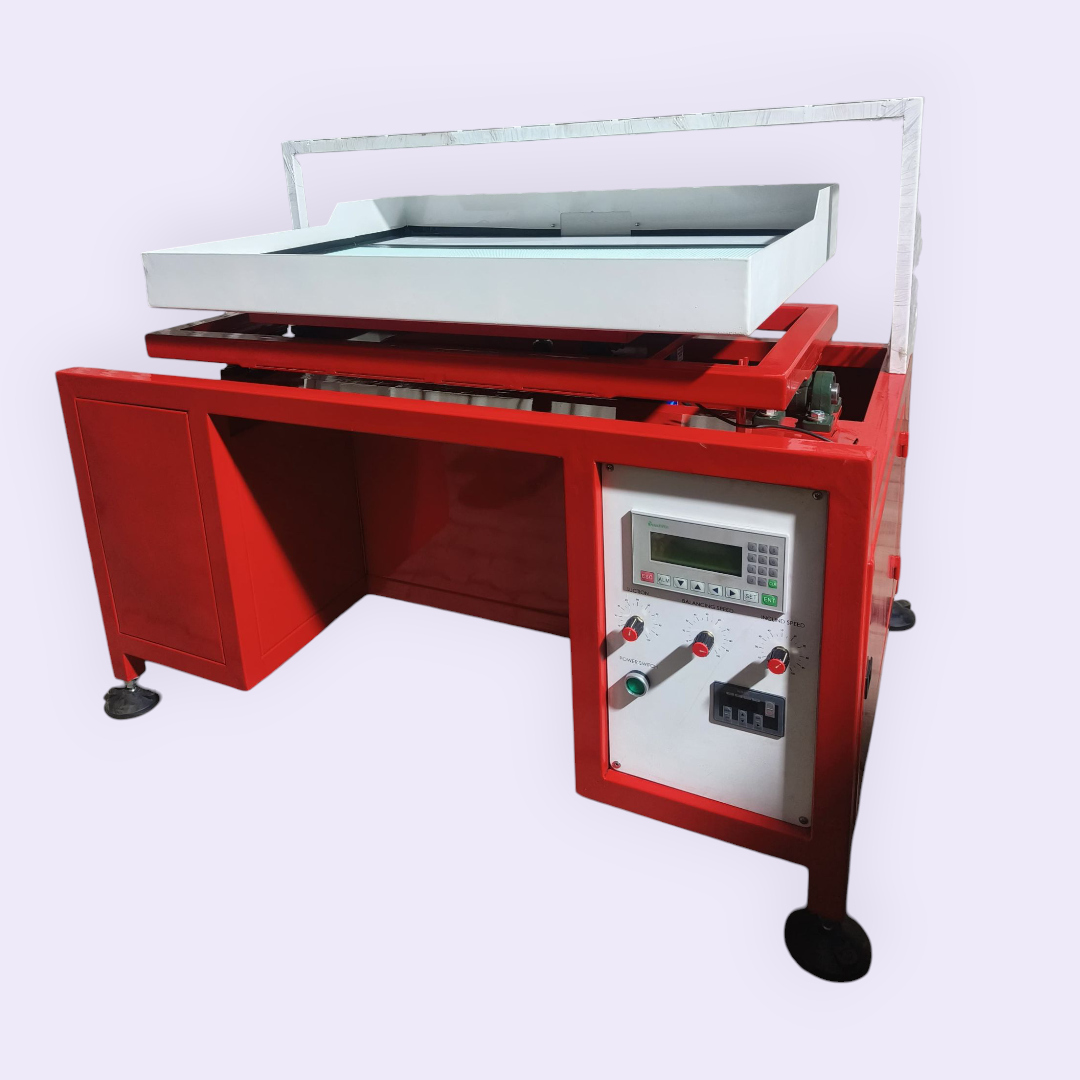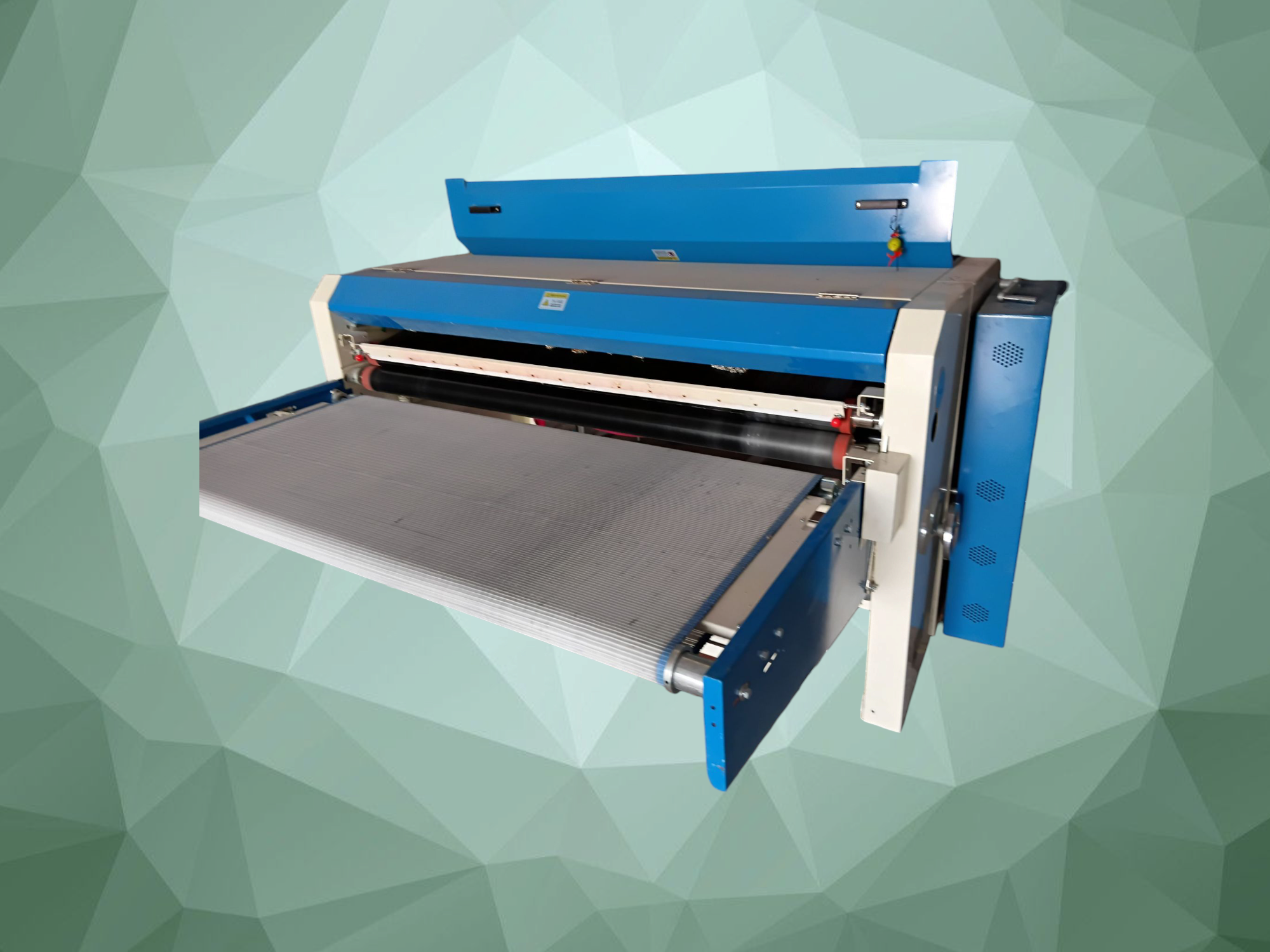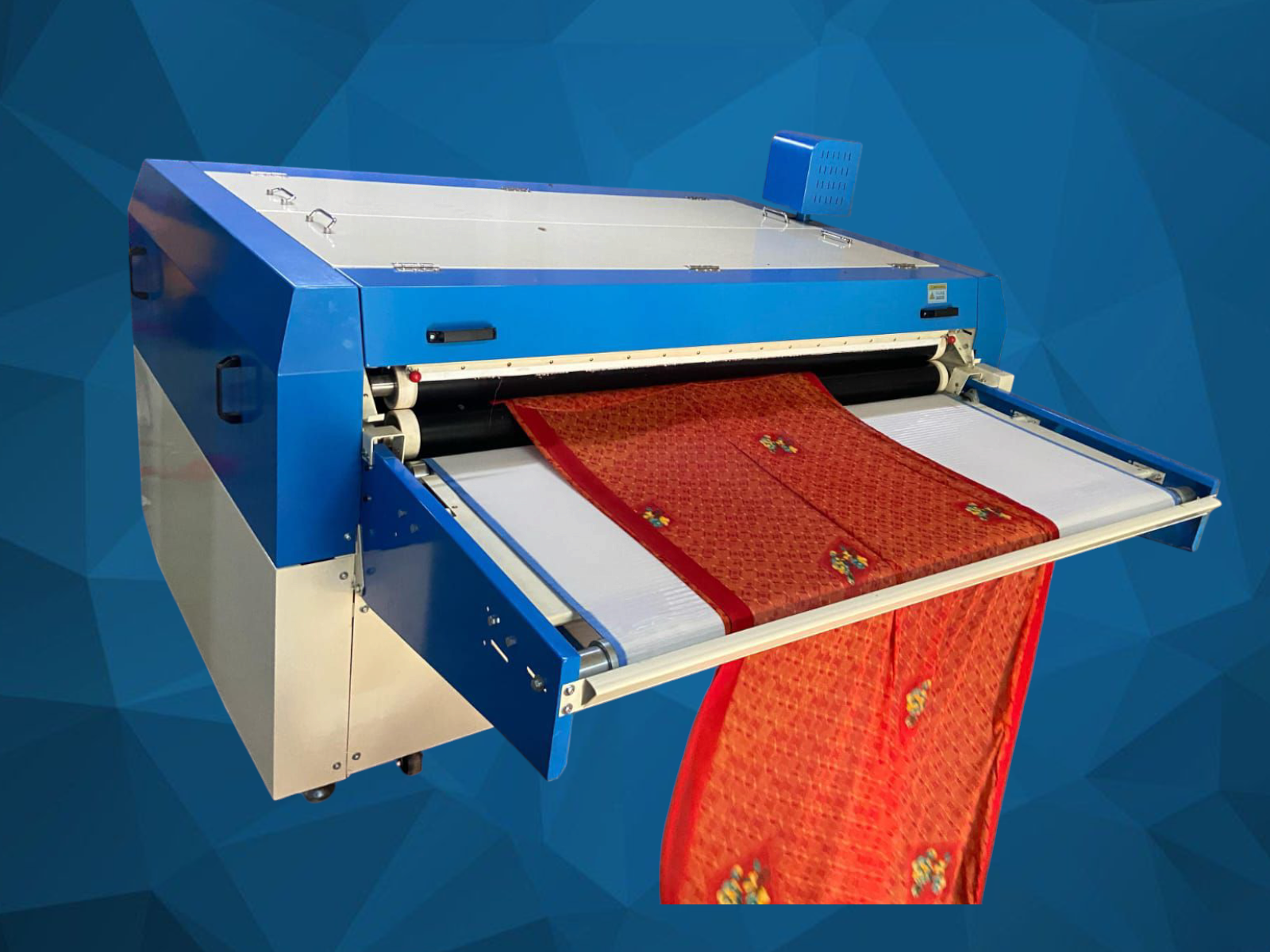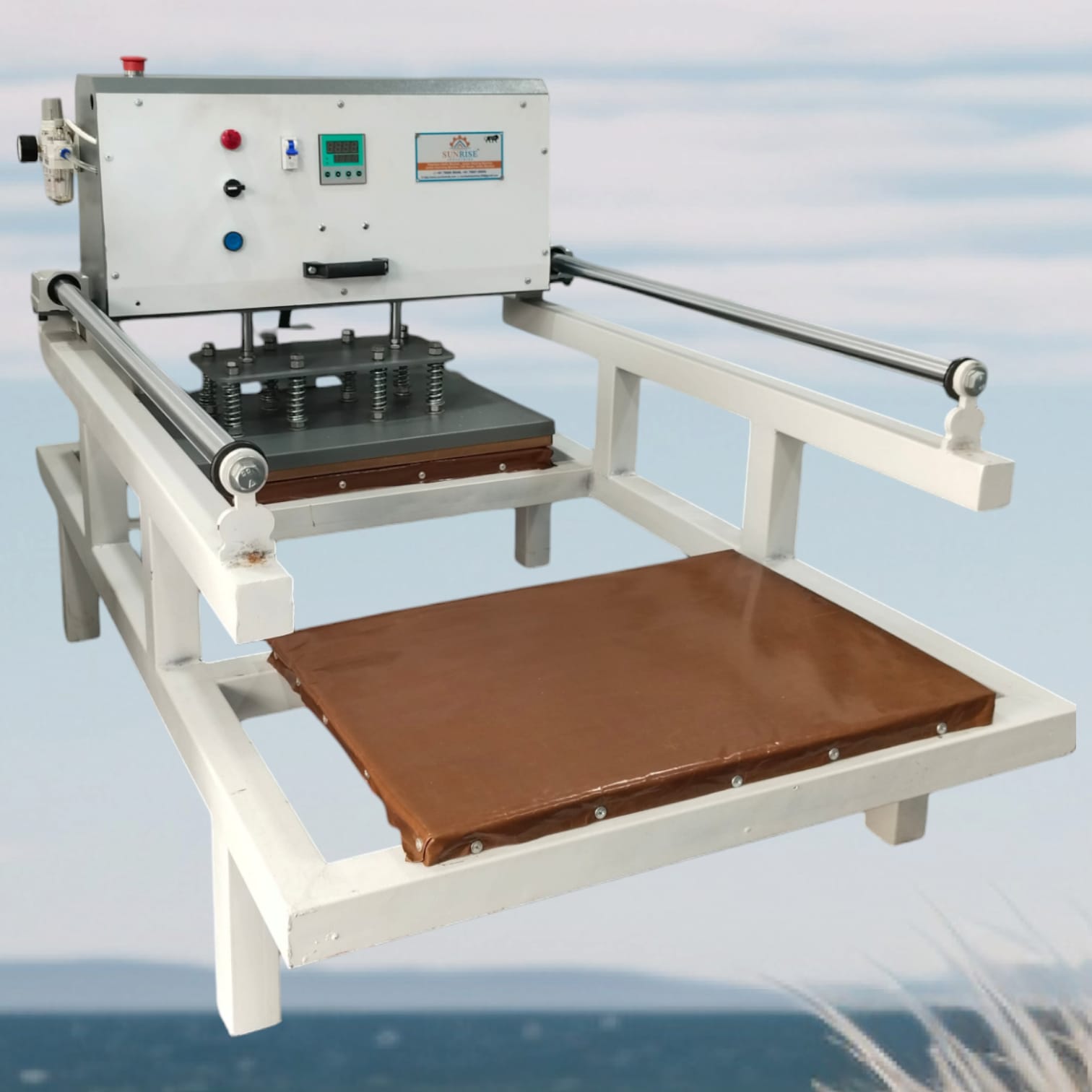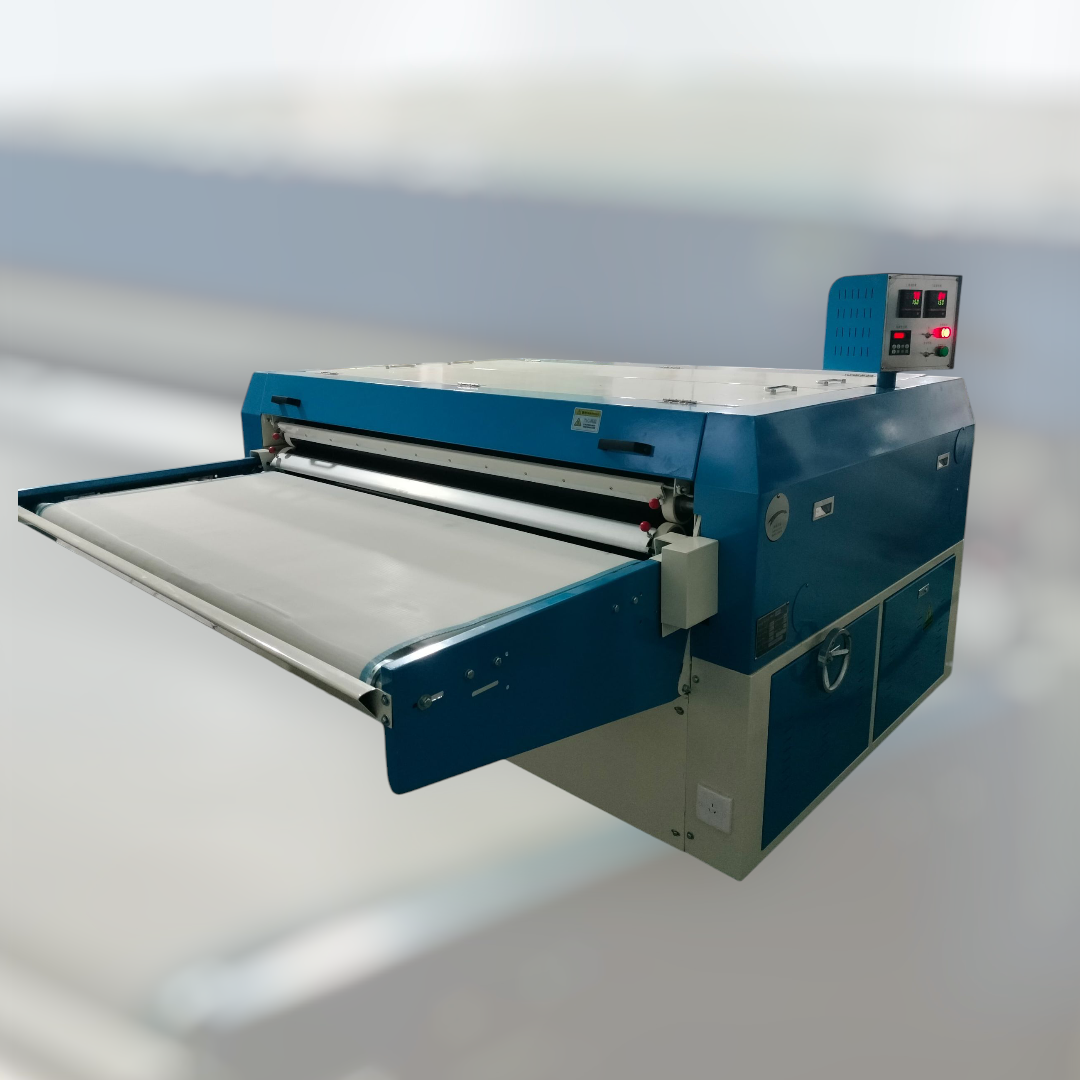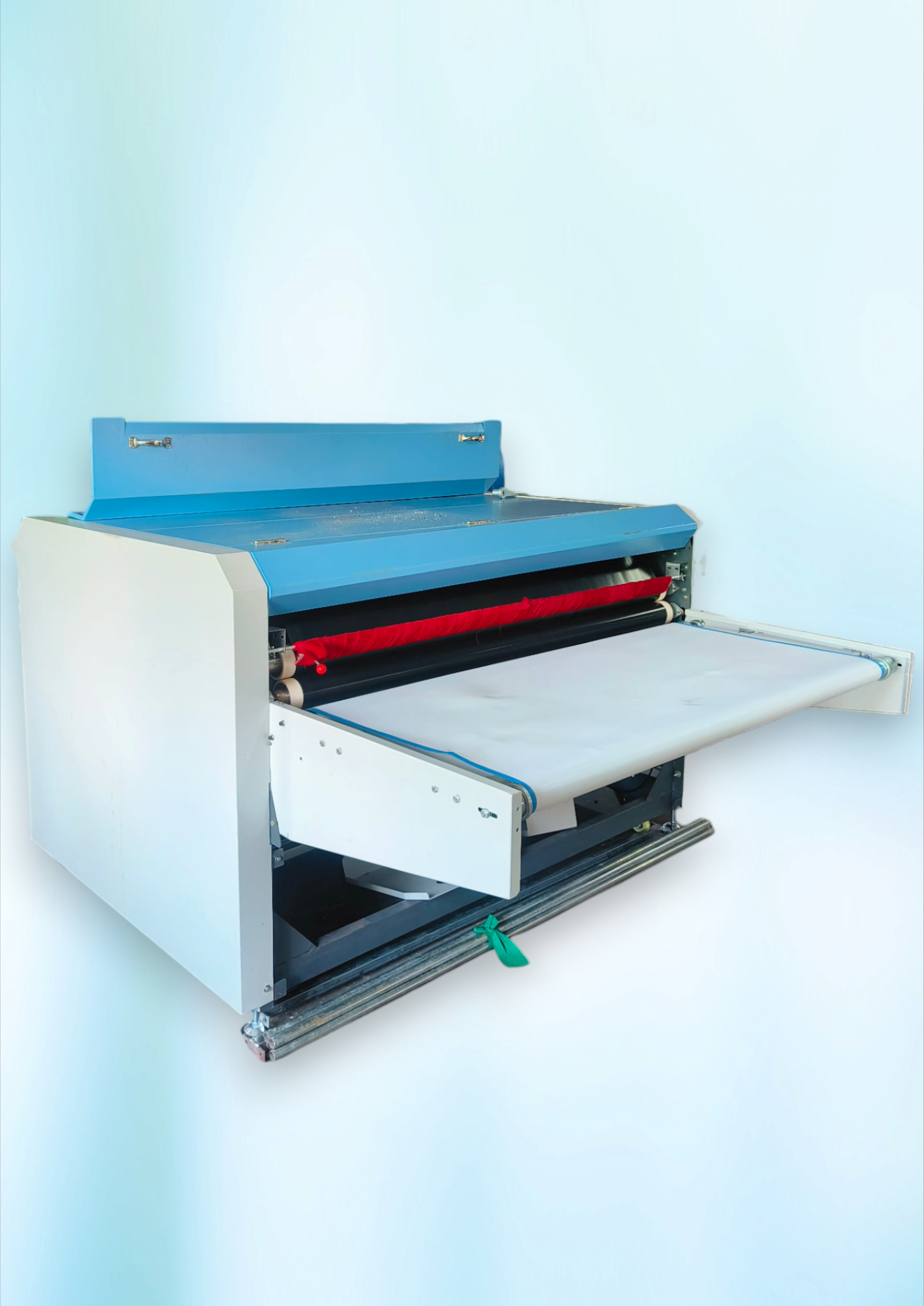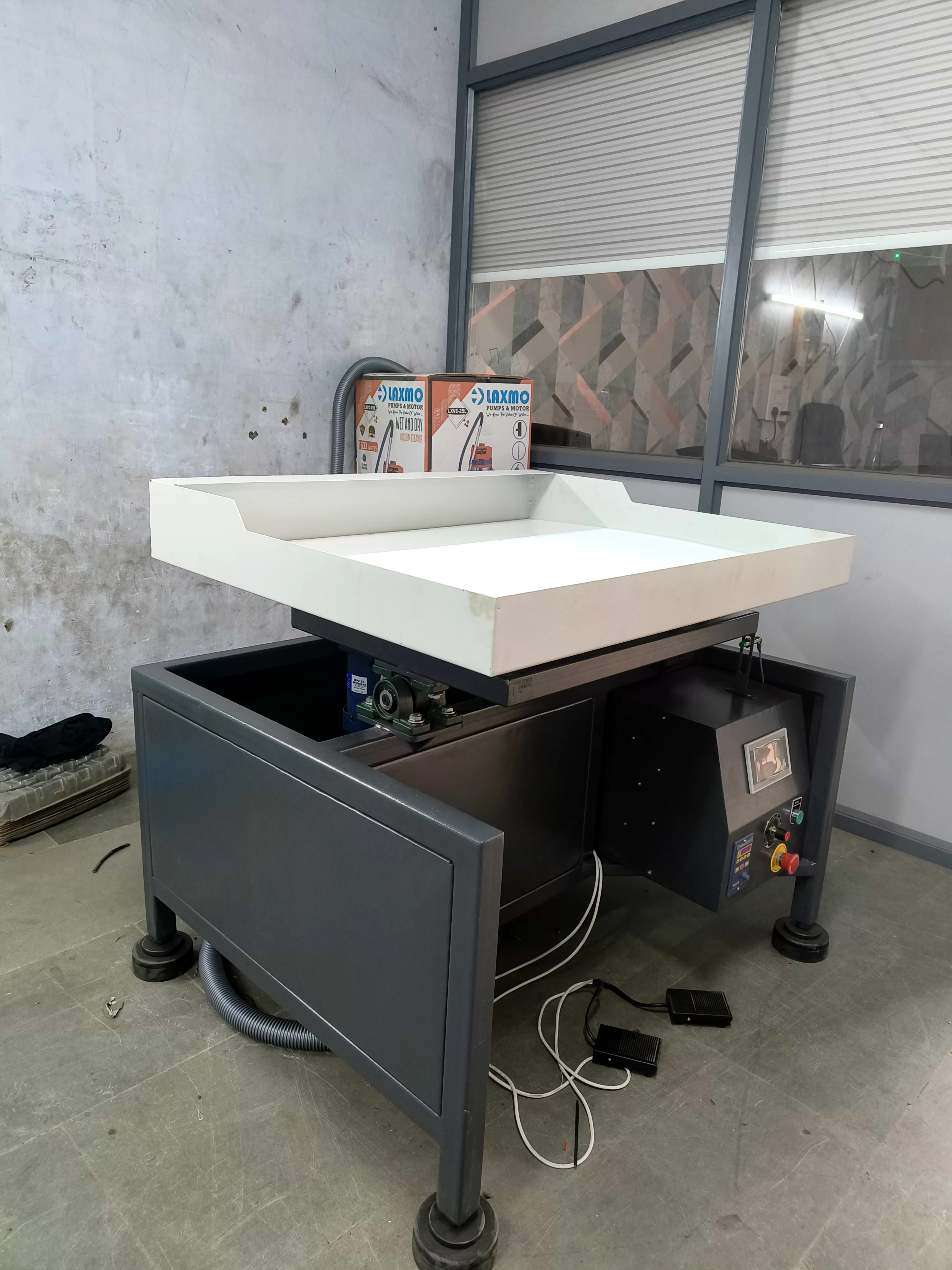ABOUT MACHINE - The Jarkan Machine, also known as the Jarkan Shaking Machine, is a specialized device used primarily in the textile industry. It is designed to handle different sizes of round rhinestones, Jarkan stones, various nail heads, and abnormal studs. The machine can automatically rise and decline, and it efficiently collects stones, which saves both time and labor. - The Jarkan Shaking Machine is available in both manual and automatic versions, and it includes features such as an emergency stop facility for enhanced safety. It operates with a voltage of 220 V and typically has a capacity of producing 4-5 pieces per minute. - This machine is widely used for creating designs on sarees, dresses, bangles, footwear, and lace, making it an essential tool for textile and garment manufacturing processes. JARKAN Machine Technical Data:The Jarkan Shaking Machine has several technical specifications tailored for the textile industry, making it efficient and versatile for various applications. Here are the key technical details: -Voltage: 220 V - Power Consumption: Typically, around 1 kW/h, varying slightly depending on the model - Production Capacity: Approximately 4-5 pieces per minute for some models. Up to 500 sheets per day for others. - Weight: Around 160 kg, depending on the specific machine configuration. - Phase: Single-phase. - Working Size: Common sizes include 16x24 inches, 18x30 inches, 20x30 inches, 16x16 inches, 24x24 inches and 24x32 inches - Machine Material: Usually made of mild steel - Frequency: Ranges between 40 Hz and 50 Hz Additional features: Automatic Operation Emergency Stop Facility: Enhances safety during operation. User-Friendly Controls: Often includes a microcomputer controller with an LCD display. These specifications highlight the machine's capability to handle various sizes and types of stones, making it suitable for detailed and high-volume textile applications. Application Of Jarkan Shaking Machine The Jarkan Shaking Machine is versatile and finds application across various domains within the textile and fashion industry. Here are some of the primary applications: Saree Design: - Used for placing rhinestones and other decorative elements on sarees to create intricate and attractive designs. Dress Decoration: - Employed in embellishing dresses with rhinestones and nailheads, adding a touch of glamour and sophistication to the garments. Bangle Making: - Utilized for decorating bangles with stones, enhancing their aesthetic appeal and making them more attractive for customers. Ultra-fast Semi-Automatic and Automatic Jarrakan Shaking Machine Fabric friendly & suitable for Making Designs for Saree, Dress, bangles, Footwear, Lace Manufacturing. Easy Operation with Automatic System It can automatically rise and decline, automatically collect stones, saving time and labor. jarkan Shaking Machine is suitable for different sizes of round rhinestones, Jarkan, various nailheads, abnormal studs etc. Manual and Automatic Both options are available for working Emergency Stop Facility is available Names- jarkan shaking machine, jarkan sticker making machine, jarkan attaching machine, jarkan sheet making machine, chaton stone transfer machine and rhinestone shaking machine, nail stone machine, automatic rhinestone machine, rhinestone machine for t shirts, jarkhan, Nail stone brushing machine, JArkan chavno, Jarkan Shaking Machine, Jarkan Diamond Stone, Jarkan Shaking Machine Manufacturer from Surat, Jarkan Sticker Making Machine, Jarkan stone fixing machine, Jarkan Diamond Sheet Making Machine, Jarkan Diamond Handwork.
Send Message